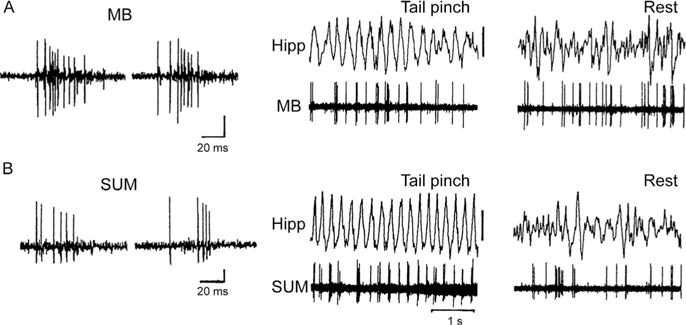FIGURE 2.

Burst properties of neurons of the mammillary bodies (MB) (A) and the supramammillary nucleus (SUM). (B) during theta (middle traces) and non-theta (right traces) states of the hippocampal EEG in the anesthetized rat. Note that both MB and SUM cells discharge rhythmically in bursts synchronous with the theta rhythm (produced by a tail pinch) but nonrhythmically in the absence of theta (rest). Whereas the theta burst discharge of MB cells is dependent on descending input from the hippocampus to MB via the fornix, the theta rhythmical activity of SUM cells involves the ascending actions of the brainstem reticular formation on SUM (see Vertes et al., 2004 and text).
